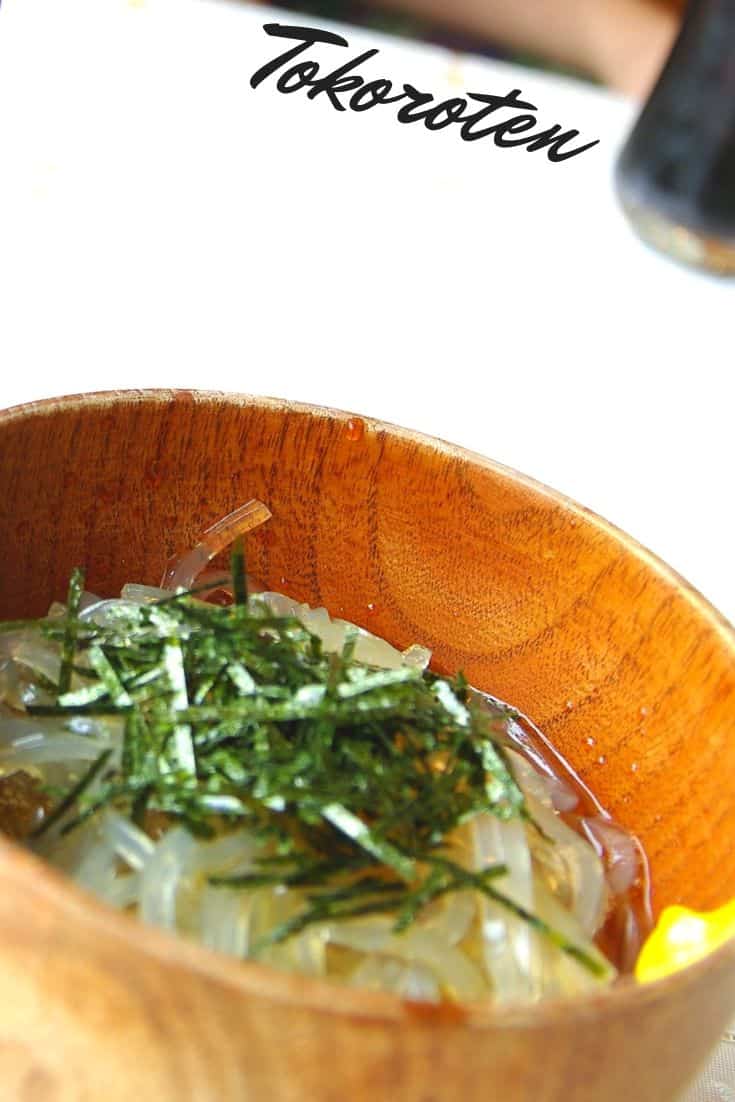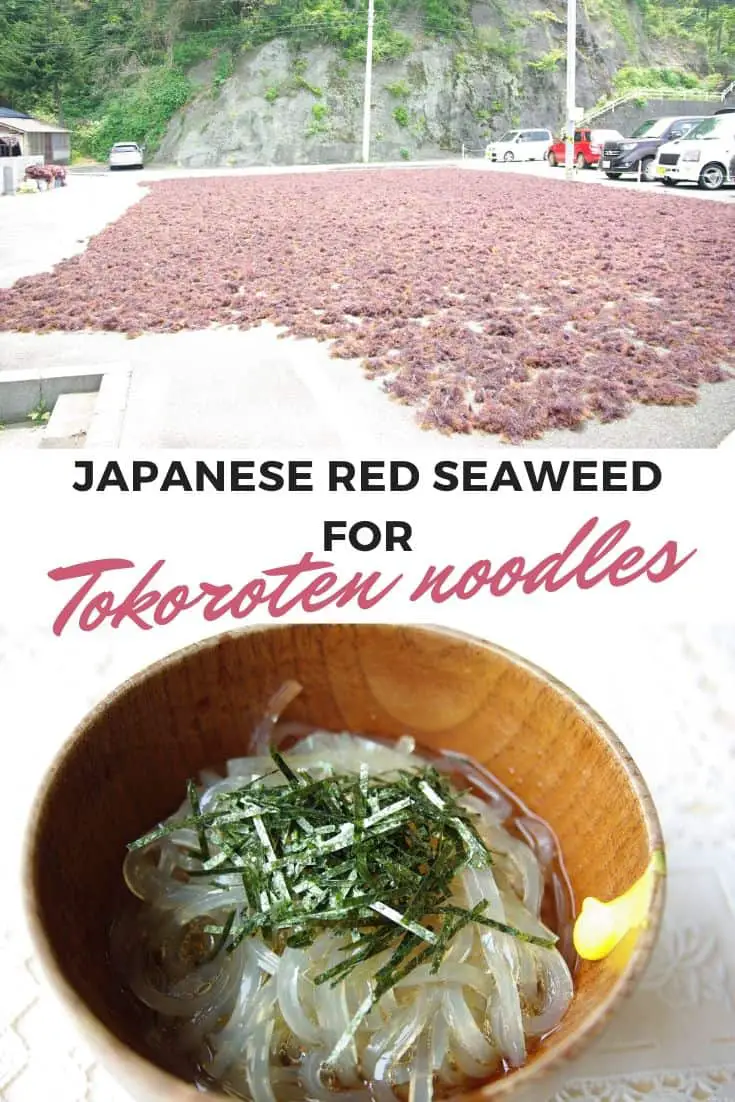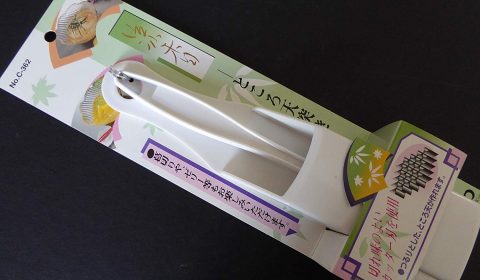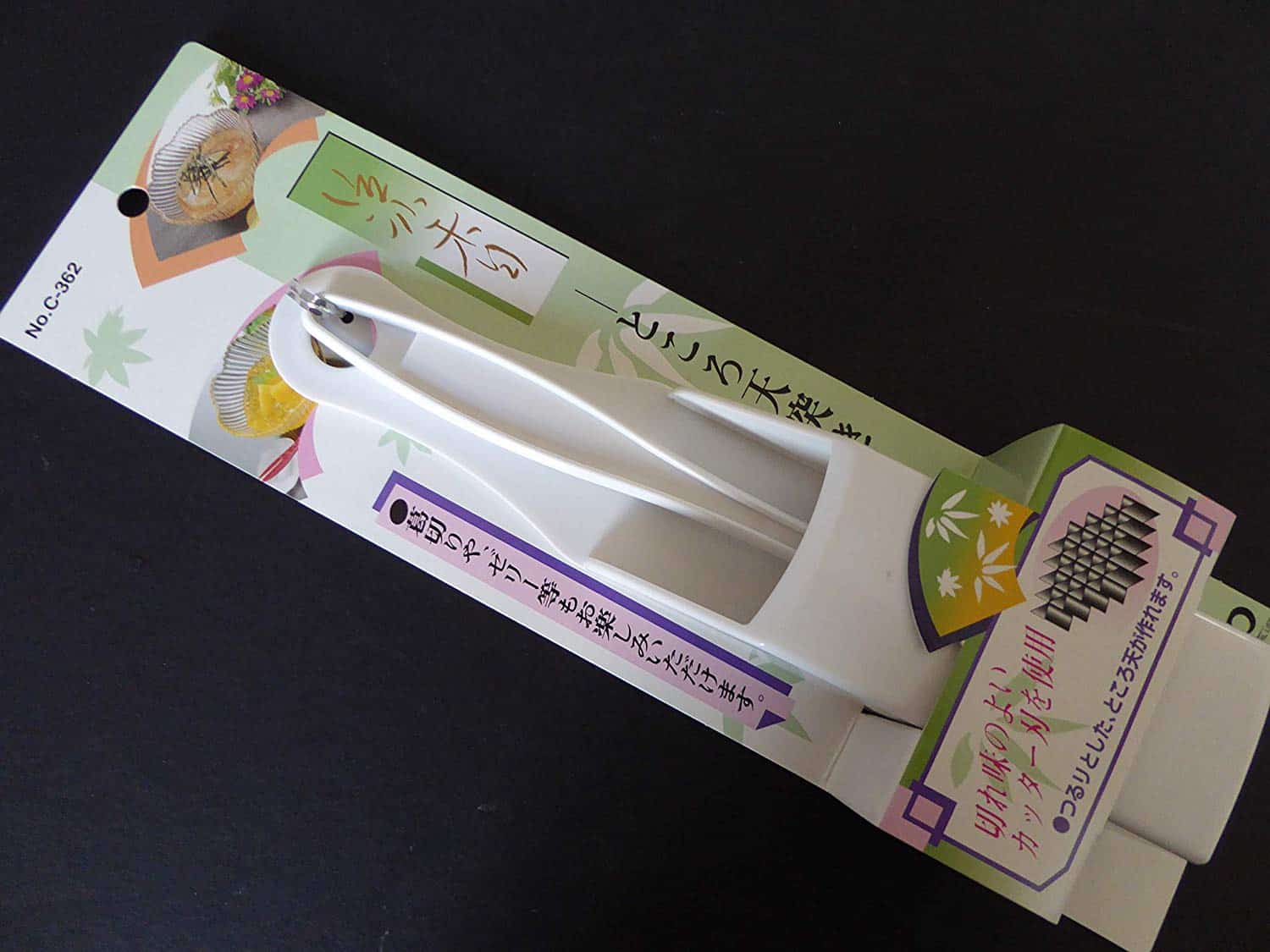Tokoroten recipe, video & what is tokoroten exactly?
One of the major foundations of Japanese cuisine is seasonal eating, and summertime presents the perfect opportunity for people to enjoy revitalizing tokoroten jelly noodles.
So what is tokoroten?
This is a special type of Japanese noodle, which has been in existence for over a millennium. These noodles are made from kanten, a gelatin found in tengusa, a native seaweed.
Kanten is made out of 98% water, and it’s carb-free, low-calorie, as well as gluten-free. But it has a high fiber content.

These nutritional facts make tokoroten very popular in Japan because it makes them a healthy substitute for pasta or noodles.
It’s believed that tokoroten first arrived in Japan through China, during the Nara period.
However, these noodles were only for the aristocracy since the process of harvesting, extracting, and drying the gelatin from the tengusa seaweed was exhaustive.
However, this changed in 1658 after an innkeeper discovered that tokoroten noodles could dry and turn into kanten sheets, and that’s when he discovered the kanten gelatin. These sheets could be kept for later use.
This discovery made it easier to make tokoroten because you could rely on kanten gelatin, which ended up becoming a popular snack during the summer.
Today, kanten (which is vegan-friendly) has many uses in Japanese cuisine, from baking tokoroten noodles in the summertime to making sweets referred to as wagashi.
Here’s Yukodama on YouTube making tokoroten with a specialized tool:
It’s an original Japanese tokoroten jelly cutter like this one on Amazon:

Check out our new cookbook
Bitemybun's family recipes with complete meal planner and recipe guide.
Try it out for free with Kindle Unlimited:
Read for freeIn this post we'll cover:
What differentiates tokoroten from other jellies?
You might’ve heard of the term “agar-agar,” which is an English synonym for various types of gelatins made out of seaweed.
However, this term refers to 2 different types of gelatin in Japan: kanten and agar:
- Agar – This is a form of gelatin made with different forms of red seaweed. The gel has a wobbly texture, which resembles jelly and has a softer mouthfeel. Agar is mostly used in making desserts like custard, pudding, and soft jellies in Japan.
- Kanten – This is a bit harder type of gelatin that’s made from ogonori seaweed or tengusa, a type of red seaweed. Kanten is mostly sold either as a solid block or powdered form, and it’s used to make wagashi sweets like yokana (jellied-bean paste sweets), as well as tokoroten noodles.

This is a text overlay image of the original work MGP0380天草 ところてん材料 seeweed for TOKOROTEN by Yuko Hara and ところてん seeweed jelly TOKOROTEN by Yuko Hara on Flickr under cc.
Why should you eat tokoroten?
Tokoroten noodles are very healthy since they’re almost calorie-free. You can eat this Japanese snack as a saturating agent.
Tokoroten is mostly prepared and chilled during the Japanese summer, and you can enjoy the noodles with different sauces.
- The noodles contain 2 calories per 100g, which makes them very healthy and diet-friendly.
- In addition, they contain 99% water, which makes them an amazing snack to eat if you’re on a diet.
Eating these noodles means that you’ll just be eating water, which will revitalize your body.
However, it’s important to note that although these noodles contain 99% water, they’re a bit more than that. They come with vitamins and minerals, like molybdenum and iodine, as well as some magnesium.
The health benefits of eating tokoroten
- It has an extremely low calorie count.
- It has high fiber content, so it moves slowly through your digestion system, making you feel full for a longer period. Also, it relieves constipation.
- It can prevent sugar from being absorbed in your body.
- It helps reduce cholesterol levels in your body.
- It increases your body’s metabolism levels
How do you make tokoroten?
You’ll need kanten, the basic ingredient if you want to make these Japanese noodles. These noodles are easy to make, but there’s one challenge if you don’t live in Japan:finding the kanten to make these noodles.
In Japan, kanten is easy to find, as it’s sold in almost every restaurant. However, if you live outside Japan, you’ll find it in special stores.
But make sure that you don’t confuse kanten with agar-agar, which is another form of seaweed, which resembles jelly. It’s important to note that you can’t substitute knten with agar-agar since kanten jelly has a much firmer texture.
In addition to the kanten, you’ll also need a tensuki, which will help you in making the tokoroten noodles. This traditional tokoroten maker will help you change the hard tokoroten jelly into noodles.
If you live in Japan, you can find tensukis at any store that deals with kitchenware. It’ll cost you around 200 yen to get one of these devices.
However, if you live outside Japan, you’ll have to order one from different online stores.
Although I said that you shouldn’t substitute kanten with agar-agar, you might have to do it in cases where you don’t have kanten. So to make tokoroten noodles, you’ll need water, vinegar, and agar-agar. You can buy it at your local supermarket or order it online.
What do tokoroten noodles taste like?
Tokoroten jelly doesn’t have any taste. In fact, the herbal jelly is nearly tasteless. So you’ll need a sauce to add some taste to the noodles.
Also read: these are great traditional shichirin grills I’ve found online
Which sauces are ideal for tokoroten?

There are various sauces that you can use with tokoroten noodles. Here are some recipes for these sauces.
Mild taste
You’ll need the following ingredients for this sauce:
- Rice vinegar – 1 tbsp
- Soy sauce – 1 tbsp
- Sugar – 1 tbsp
Kuromitsu sauce
Kuromitsu sauce is sweet and salty, and you’ll need the following ingredients:
- Brown sugar – 1 tbsp (heap full)
- White sugar – 1 tbsp (level full)
- Water – 2 tbsp
Kanto sauce
This tokoroten sauce is a bit spiced, and you’ll need the following ingredients:
- Soy sauce – 2 tbsp
- Rice vinegar – 2 tbsp
- Spring onion (minced) – ¼
- Mustard – 1 tsp

How to make tokoroten noodles yourself
Equipment
- Cooking pot
- Tensuki
Ingredients
- 1 tbsp vinegar
- 3 ounces kanten jelly (or agar if you can't find it)
Tokoroten kanto sauce
- 2 tbsp soy sauce
- 2 tbsp rice vinegar
- 1/4 spring onion minced
- 1 tsp mustard
Instructions
- Boil the water and then add 1 tablespoon of vinegar.
- Next, you need to add the kanten jelly or agar-agar, and then stir well. You can cook it for 2 minutes.
- Remove it from the stove and allow it to cool. You can put it into a jar, and then place it in a fridge for around 2 hours. This mixture will become a jelly as it cools.
- Now, you'll need to use the tensuki to make the noodles. If you don’t have the tool, then you shouldn’t worry, as you can cut the jelly into cubes.
- To make the sauce, you need to mix the ingredients in a separate bowl.
- Lastly, serve the noodles and then dip them into the sauce, or just mix the sauce with the noodles.
Enjoy tokoroken noodles on a hot summer day
Tokoroken noodles are a unique and revitalizing summertime food, which is very healthy and refreshing too. So make sure that you try it out the next time you’re in Japan!
Read more: delicious monjayaki recipes
Check out our new cookbook
Bitemybun's family recipes with complete meal planner and recipe guide.
Try it out for free with Kindle Unlimited:
Read for freeJoost Nusselder, the founder of Bite My Bun is a content marketer, dad and loves trying out new food with Japanese food at the heart of his passion, and together with his team he's been creating in-depth blog articles since 2016 to help loyal readers with recipes and cooking tips.

